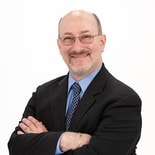Swallowing Treatment: What’s Next?
Presented by Martin B. Brodsky and Marta Kazandjian
12-Month Subscription
Unlimited access to:
- Thousands of CE Courses
- Patient Education
- Home Exercise Program
- And more
This four-part course series is designed to be taken sequentially, beginning with Course 1: Behind the Scenes With SLPs Across Models of Care in the ICU and concluding with Course 4: Swallowing Treatment: What’s Next?
Each course builds upon the knowledge from the previous one, providing learners with an understanding of ICU management for SLPs. By the final course, participants will have a well-rounded grasp of key concepts essential for effective patient care in the ICU.
Course Overview
- Behind the Scenes With SLPs Across Models of Care in the ICU
- PARTNERS: Inclusive Framework for Multidisciplinary Team Conversations
- Assessment of Swallowing in the ICU: Where Do You Start?
- Swallowing Treatment: What’s Next?
Learning Objectives
- Evaluate five important physiologic components necessary for swallowing intervention
- Determine an appropriate treatment intervention that considers the interaction between physiologic components
- Design a treatment plan implementing PARTNERS from a case study example
Meet your instructors

Martin B. Brodsky
Dr. Martin Brodsky is the section head for speech-language pathology in the Department of Otolaryngology Head and Neck Surgery within the Integrated Surgical Institute at Cleveland Clinic and is an adjunct associate professor of physical medicine and rehabilitation and pulmonary and critical care medicine at Johns Hopkins…

Marta Kazandjian
Marta Kazandjian is a clinical assistant professor and department head at Stony Brook Southampton Hospital and Stony Brook University. She is an ASHA fellow and is board-certified in both swallowing and swallowing disorders as well as in health and wellness coaching. She is an invited national and international speaker and…
Chapters & learning objectives

1. Physiologic Management of Swallowing in the ICU
Five physiologic impairments contributing to dysphagia and associated with critical care will be detailed. Examples of each component will be provided, clearly illustrating component interactions.

2. Component Interactions
Order of approach to treatment of one physiologic component may affect other components. Medical and/or cognitive acute changes may alter the relationships between these components. A discussion of the interaction between components will assist the learner in understanding the delicate balance during treatment planning.

3. Case Study: PARTNERS Illustrated
A case study will be used to illustrate the framework of PARTNERS in the context of developing a comprehensive treatment plan. Considerations used within this case study may be adapted as a model by the learner for clinical management.
More courses in this series

Behind the Scenes With SLPs Across Models of Care in the ICU
Martin B. Brodsky and Marta Kazandjian

PARTNERS: Inclusive Framework for Multidisciplinary Team Conversations
Martin B. Brodsky and Marta Kazandjian

Assessment of Swallowing in the ICU: Where Do You Start?
Martin B. Brodsky and Marta Kazandjian

Swallowing Treatment: What’s Next?
Martin B. Brodsky and Marta Kazandjian
